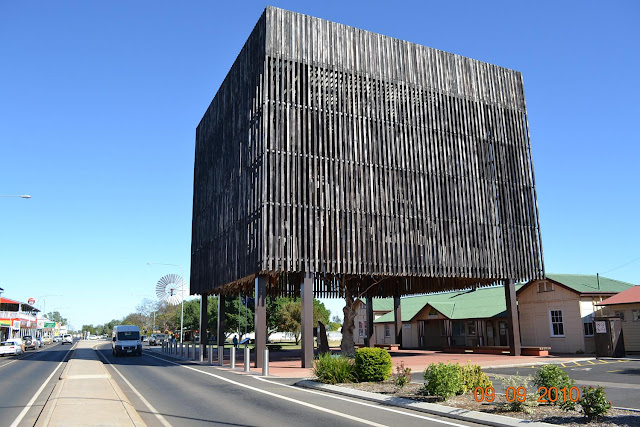Staying at Needmor was truly unforgetable for me and being able to stay there for 5 days and experience real outback life was unbelievable. The Mylrea family are all very nice and hospitable and according to the Editor they are a typical Australian country family. Country families are very close and are always very welcoming of visitors. I suddenly miss home and my family.
It also very obvious that there is an obvious difference between country people and city people. The is also a difference between people from the southern states of Australia when compared to Queenlanders
During our stay the Editor was able to help Cliff with some of the jobs that he needed to get done. There was mustering, they put a "nappy" on a very cranky bull which had a condition which is called "Prolapsed". Proplased means that the bulls penis has gotten infected and very swollen. This can be caused by a few different things, he might have picked up a grass seed that has gotten up inside the sheath around the penis and become infected. Better him than the Editor!!
Cliff and the Editor also concreted some steel posts in the ground for Cliff's new hay shed. The cement mixer did not make it through the project so the boys had to mix the last of the concrete by hand in the wheelbarrow. They also started to weld up the trusses (trusses hold up the roof) for the shed as well, but they ran out of steel. They fixed an electric fence. We went shooting, well sort of, we shot at a piece of tin wedged into a tree so that was also another new experience for me. I got to pat a new bull. He ate some feed from my hand. This was good until he licked my hand with his rough tongue, he scared the crap out of me!!!
I got to experience some typical aussie country cooking as well, home made biscuits and cakes. The editor told Cliff's mum (Barb) that he reckons that she made the best curried sausages. I think this made Barb feel either guilty or proud as we had curried sausages the next night for dinner. The other thing I noticed is that country people, well the Mylreas at least eat breakfast, morning tea (smoko) , lunch, after noon tea (smoko) as well as a big feed at night time including deserts. But I suppose this makes sense as life on the land is hard work all day everyday.
Below are some of the photos during our stay at Cliff's property.
 |
| We had a good spot to park the bus. |
 |
| Isn't this a lovely bull? |
 |
| Except for his dick which is infected thats why its protruding and swollen. |
 |
| Lesson 101 - Putting nappies on a bull. |
 |
| It wasn't an easy job. |
 |
| But they did it. |
 |
| A pretty mare with her foal. |
 |
| More horses. |
 |
| The farmer getting ready to head out in the paddock. |
 |
| Cliff's son Eddie and another friend of the Mylrea's |
 |
| some wild kangaroos |
 |
| A day of mustering. |
 |
| Lesson 102 - Fixing a cement mixer. |
 |
| Little Eddie burying the dog in cottonseed. |
 |
| The Mylrea family. |
This week has certainly been one of the best weeks I had had so far. I can only hope that this is a sign of more good times yet to come as we tour around this very large country. Thanks to the Mylreas for a very memorable experience.





































